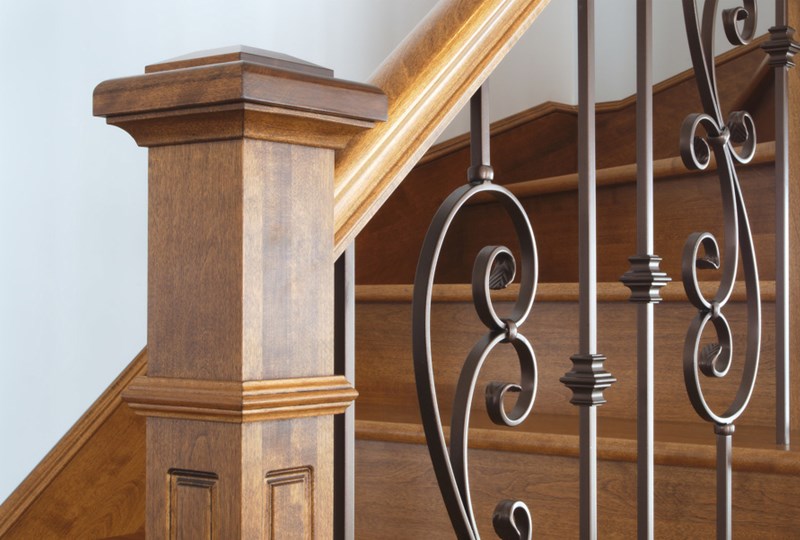
Key insights:
- A home with good bones is structurally sound and in good condition, but it needs some cosmetic updates.
- Custom and original features may be selling points.
- The materials used to build it are important, regardless of the age of the home.
There are many considerations when you’re making your list of must-haves and nice-to-haves during your home search. When deciding whether to buy a house that requires some attention or a turnkey property, you may have heard people refer to homes as having “good bones.” Generally speaking, a property with good bones is likely a fixer-upper home that requires smaller cosmetic updates, rather than a complete renovation.
As you tour homes, be sure to consider and inspect various aspects of the structure and features of the property. Here are some ways to tell when a house has good bones when buying.
Size up the home structure
How a home is built will likely impact how its structure will stand the test of time. Every day wear and tear, along with environmental factors, might begin to take a toll on a home, so you’ll want to ensure it was built with the best materials available.
First, investigate the foundation of the home. This aspect of the property is arguably the most important “bone” of the house. Ensuring that there are no cracks in the foundation, no tipping and no sloping floors is ultra-important. While determining the status of the foundation, also watch for signs of leaking water or damage in the walls, both of which could require significant fixes.
Keep in mind, though, that unless you’re a contractor, you probably don’t have the expertise needed to identify problems that might exist with the foundation and other aspects of the home. Having a full home inspection done before purchasing is a great way to ensure you understand the property’s condition and needed repairs. A home inspector has the experience and training to identify less obvious issues and, sometimes, they might even recommend additional inspections by a more specialized expert (like a structural engineer).
Last, look at the original materials used to build a home. Solid hardwood, for example, can typically be restored to its original condition while synthetic materials like laminate or linoleum tend to degrade over time. You’ll also want to take a look at the doors of the home. Solid wood doors minimize sound travel from room to room; hollow core doors do not.
Check for unique features
Charming features, like crown molding, can be added to any house. However, a home with good bones may have unique details that are original to the house and the time period in which it was built.
Victorian homes, for example, may include towers, turrets and ornate railings, while mid-century modern houses utilize natural materials like stone and wood to highlight elements found in the environment. Whether a property includes the original doorbell or a built-in wooden window seat, many homeowners prize a property that has preserved its original character.
Quality materials and modern homes
Keep in mind, not all good bones are original to a home. Some high-quality features are added to the property after smart homeowners use the space. Copper piping, well-placed drains for winter runoff and the addition of a main floor bathroom are all examples of home improvements that increase the value and functionality of an updated house.
Oftentimes, older homes are said to have good bones because they tended to use high-quality materials. However, newer homes can have good bones, too!
When buying a house, pay special attention to craftsmanship and materials used. Did the previous owners cut corners by using less expensive materials in flooring, cabinets, doors and even windows? Or, did they invest in high-quality materials that will stand the test of time?
Do you feel it in your bones?
When it all comes down to it, the perfect house is about more than just good bones— it's also about the property location and how it works for your family and lifestyle.
When you’re ready to begin your home search, reach out to Edina Realty or one of our agents to help you find the house with the right feel and quality.









 ©2025 Prosperity Home Mortgage LLC®. (877) 275-1762. 3060 Williams Drive, Suite 600, Fairfax, VA 22031. All first mortgage products are provided by Prosperity Home Mortgage, LLC®. Not all mortgage products may be available in all areas. Not all borrowers will qualify. NMLS ID #75164 (For licensing information go to: NMLS Consumer Access at
©2025 Prosperity Home Mortgage LLC®. (877) 275-1762. 3060 Williams Drive, Suite 600, Fairfax, VA 22031. All first mortgage products are provided by Prosperity Home Mortgage, LLC®. Not all mortgage products may be available in all areas. Not all borrowers will qualify. NMLS ID #75164 (For licensing information go to: NMLS Consumer Access at